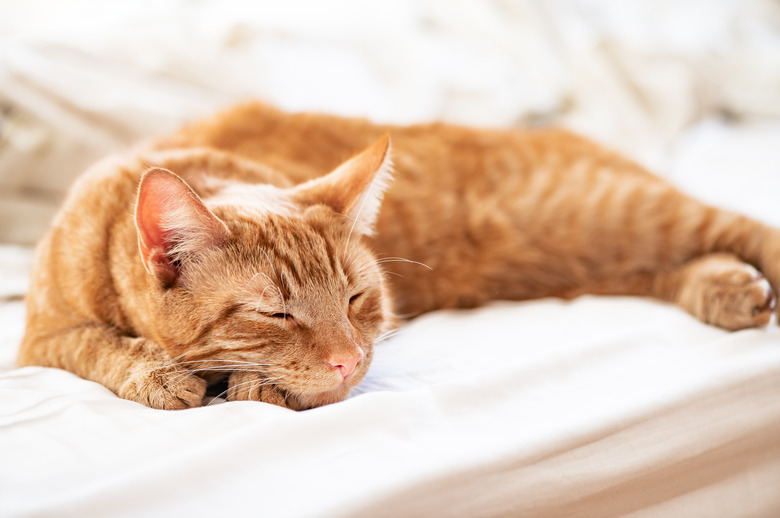How To Treat A Wounded Cat Pad
Treatment of a wounded cat foot pad depends on the nature of the injury. If a cut on the cat's paw bleeds heavily or is a puncture wound, or your feline has a cat paw pad that split open, take your cat to the vet immediately. Untreated deep wounds can lead to an infection, and if you're not sure it happened, sores on cats' feet are sometimes indicative of serious conditions.
A vet visit is also a good idea for a cat paw pad injury if the wound swells, or if your cat can't walk and appears in obvious pain. You probably can handle a minor paw scrape on your own, if your cat cooperates.
Minor cat paw pad injury
Minor cat paw pad injury
If your cat suffered a small scrape or cut, after controlling the bleeding, your goal should be to keep it clean. Wash it with warm water a few times daily. Use an antiseptic salve or spray recommended for felines on the injury. You want to ensure bacteria doesn't enter the cut. Avoid hydrogen peroxide, as it can cause tissue damage. Keep your cat indoors, and clean his litter box after every use.
If he shares the box with other cats, isolate him and give him his own box until the cut heals. You can try putting a little bootie on him to protect his foot, carefully taping it to his leg, though he probably will try to get it off. If the wound hasn't healed within a week, take him to the vet.
Care for feline footpad injury
Care for feline footpad injury
For a more severe footpad injury, like a feline puncture wound, a trip to the veterinarian is necessary immediately. Your vet will examine your cat's footpad to determine the nature of the wound.
Most wounds are evident upon examination, but some require closer attention. A foreign object can embed itself in your cat's footpad, so your vet might have to sedate your cat to remove it. They'll clean out any wound with antiseptics and apply a bandage.
They might prescribe antibiotics to combat potential infection. If an injury is severe, such as loss of part of the footpad, or a cat paw pad split open, surgery might be required after initial treatment. That involves grafting part of another pad — such as those tiny pads on the wrist — onto the footpad.
Cat bandage for footpad wound
Cat bandage for footpad wound
If your cat's injured paw is bandaged, you must change the bandage every few days. This will be true for almost any foot injury, whether moderate or severe. Because cats sweat from the footpads, moisture will affect the cat bandage. Without regular bandage changing, this moisture can cause infection and slow the healing rate.
If you don't feel capable of changing the cat bandage on your own, take your pet to the vet to have it done. Your vet can show you how to wrap and change the bandage and provide you with necessary materials. Certain antibacterial bandages are available that lessen changing frequency, but they cost considerably more than standard bandages.
Elizabethan collar while paw heals
Elizabethan collar while paw heals
Your vet likely will recommend putting an Elizabethan collar on your cat so he can't reach his paw to chew on the bandage or cause further damage to the cat paw pad injury. If your cat must wear a cone while his injury heals, it's probably best to confine him to a certain area rather than allow him the run of the house, since he may bump into things.
Having a cat first aid kit on hand can help your be prepared for any future injuries your cat may face.


